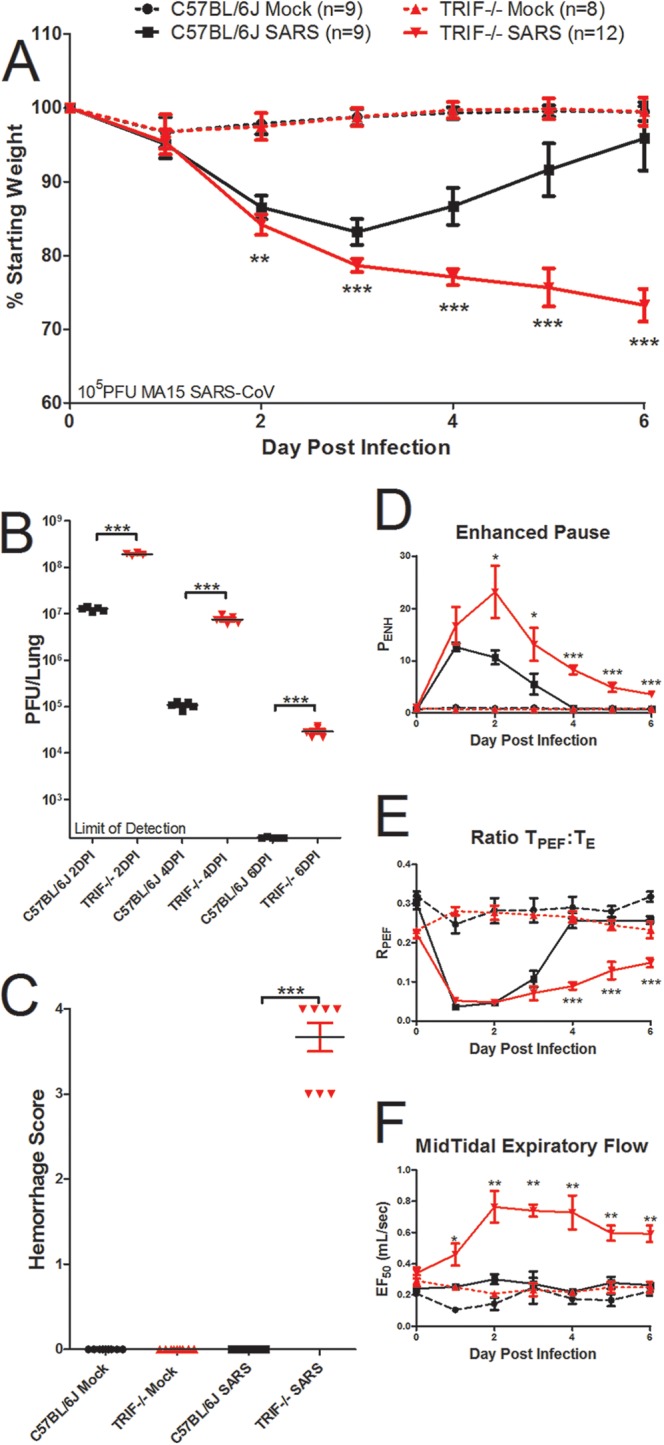FIG 3 .

TRIF−/− mice are highly susceptible to SARS-CoV infection. (A to C) TRIF−/− mice infected with SARS-CoV have significantly greater weight loss (**, P < 0.01; ***, P < 0.001 [by a nonparametric Mann-Whitney test, where values indicate mean percent starting weight and error bars indicate standard deviation]) (A), viral titers (***, P < 0.001 [by unpaired Student’s t test]) (B), and lung hemorrhage scores (scored from 0 to 4; ***, P < 0.001 [by unpaired Student’s t test]) (C) than C57BL/6J mice infected with SARS-CoV over a 6-day course of infection. (D to F) Whole-body plethysmography analysis showed that SARS-CoV-infected TRIF−/− mice (solid red line) have alterations in lung functions compared to SARS-CoV-infected C57BL/6J mice (solid black line), including enhanced pause (PENH) (D), TPEF/Te ratio (RPEF) (E), and midtidal expiratory flow (EF50) (F) levels over the course of 6 days (dashed red line, TRIF−/− mock-infected mice; dashed black line, C57BL/6J mock-infected mice) (*, P < 0.05; **, P < 0.01; ***, P < 0.001 [by unpaired Student’s t test]).
